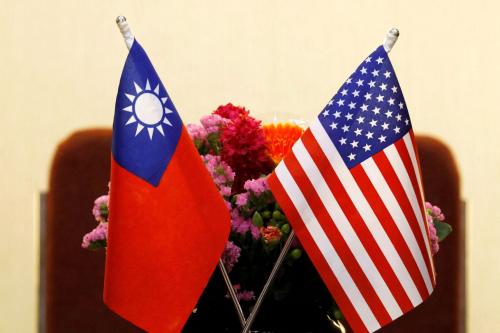How can we really determine if the Iraq mission is going well? Pessimists worry about recent truck bombings and political assassinations, ongoing serious crime problems, sustained attacks against U.S. forces, and high unemployment together with slow progress at improving the Iraqi standard of living. Optimists point to the progress in killing or arresting top Baathists, creation of municipal councils and national ruling bodies, gradual progress in building up Iraqi security forces, reopening of schools, and general sense of calm in most of the country—if not yet in the so-called Sunni triangle.
In fact, all of these indicators are important, meaning that the message from Iraq today is mixed. And because assessing progress in any counterinsurgency is inherently a complex and largely political enterprise, they must all be taken into account. To convince a skeptical public about progress in Iraq, the Bush administration would do well to provide more systematic information on all of these and other measurable metrics routinely—even when certain trends do not support the story it wants to sell.
The administration should want to do this, because on balance the Iraq mission is going fairly well. That is not to deny many mistakes were made in the early postwar effort, or that the Bush Administration—and American troops in Iraq—are now paying the price for a unilateralist rush to war. In addition, for the many Americans who listened to too much administration happy talk earlier this year about U.S. troops cakewalking into Baghdad, being warmly welcomed as liberators, and getting home fast, the mission is proving surprisingly and frustratingly difficult. Finally, unless the Bush Administration takes more dramatic steps to get our soldiers more help, it could break the US Army in Iraq—because we will surely be there for years (even if Iraqis regain sovereign control of their country in 2004).
But most indicators are now favorable in Iraq. Consider first the security environment. We face three main challenges—from criminals, Baathists, and jihadists. On the first matter, while crime rates are too high, they have generally stabilized at levels statistically no higher than in many western cities. As Iraqi police are increasingly recruited and trained, rates should decline—though Iraq clearly also needs a judicial system as soon as possible to deal with those detained.
As for Baathist remnants of Saddam’s regime, they are diminishing with time as coalition forces detain and arrest them. For example, in the region north of Baghdad now run by General Ray Odierno’s 4th infantry division, some 600 fighters have been killed and 2,500 arrested over recent months. Not all of these are Baathists, to be sure, but with those kinds of attrition rates, a group of fighters that probably numbered 10,000 to 20,000 at peak strength will decline over time, especially because it has no appealing ideology with which to attract more members. Around Tikrit, Saddam’s hometown, and other parts of the northern “Sunni triangle,” for example, former regime loyalists have been sufficiently weakened that they need reinforcements from other parts of Iraq to continue many of their efforts. Most Baathists from the famous “deck of cards” are now off the street; many second tier loyalists of the former regime are also being arrested or killed on a daily basis.
Terrorist “jihadists” are a greater worry because it cannot yet be confidently asserted that their numbers in Iraq have begun to decline or even plateau. In an overdue move, coalition forces have been strengthening border patrols to check the influx of foreign terrorists. They can hardly be expected to seal off all entry points into Iraq (though a few thousand more coalition troops might help, at least until more Iraqi border police can be trained, but even that would not solve it). But they can probably contain the problem.
In these counterinsurgency operations, American troops are following much better practices than they did in Vietnam. Firepower is generally being used quite carefully, even if mistakes such as the accidental killing of eight Iraqi police earlier this month are sometimes made. Moreover, while insurgents have displayed the full range of standard terrorist tactics—truck bombings, assassinations, use of remotely detonated explosives, mortar and rocket attacks—they are not developing particularly new methods or acting with any appreciable degree of large-scale coordination. Coalition forces and other parties were slow at times to anticipate such tactics, resulting in excessive vulnerability to the kinds of truck bombings witnessed in August and the kinds of assassination attempts that just took the life of a member of the Governing Council, Akila al-Hashimi. But these mistakes are being corrected, and future such attacks are unlikely to be as devastating.
Of course, economics issues are critical in any counterinsurgency as well. Resentment among Iraqis is indeed growing at the slow improvement in their quality of life, which for many is still worse than under Saddam. Polls demonstrate that most Iraqis are glad to have Saddam gone and want foreign troops remain in Iraq for a good while longer. But their patience cannot be assumed. As Major General David Petraeus of the 101st Air Assault division says, “we are in a race against time to win the hearts and minds of the Iraqi people.” The race is going well in his sector of northern Iraq, as well as most of the south, but Baghdad and surrounding regions remain major challenges.
The problems are well known-high unemployment, low (if increasing) electricity levels, worries about availability of gas supplies for the coming winter, even insufficient food in some places. But there is room for hope. Oil production is up. Coalition authorities are refurbishing power plants and building redundant electricity lines so that when main lines are sabotaged occasionally in the future, as they surely will be, power still flows. They are hiring Iraqis to man security forces, repair public infrastructure, beautify parks and buildings, and fix factories. If Congress does the right thing and approves President Bush’s full $87 billion (or at least the vast bulk of it) supplemental request for next year, positive trends should accelerate—though better administration diplomacy leading to more foreign contributions of troops and money would be extremely welcome as well.
Much can still go wrong in Iraq. The greatest near-term worries are increased flows of jihadists into the country, and few more lucky high-profile attacks against key leaders and/or key infrastructure. Over the longer term, we must still worry about possible fracturing of the country along ethnic and religious lines. But for those of us who never expected this to be a cakewalk, and who remember historical precedents in other counterinsurgencies, the mission can probably be said to be going reasonably well.
O’Hanlon, author of
Saving Lives with Force and Expanding Global Military Capacity for Humanitarian Intervention
, just returned from a trip to Iraq.
The Brookings Institution is committed to quality, independence, and impact.
We are supported by a diverse array of funders. In line with our values and policies, each Brookings publication represents the sole views of its author(s).



Commentary
Assessing Progress in Iraq
September 29, 2003